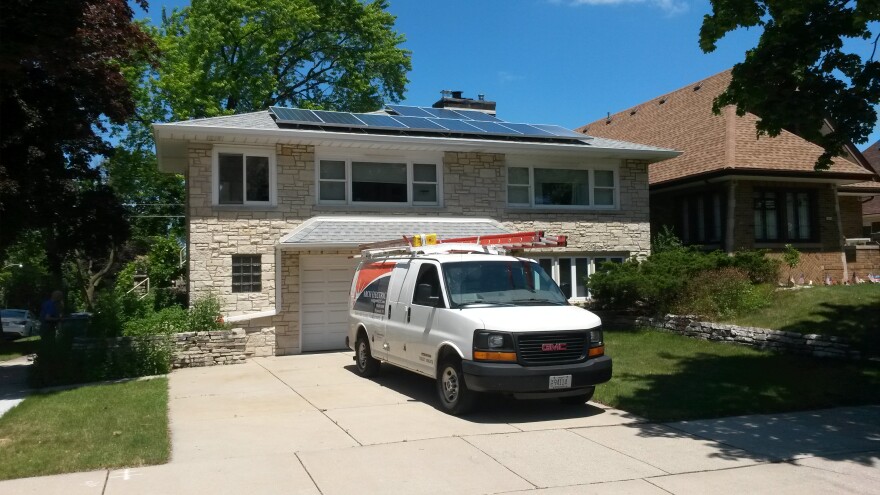Over the last few years, nearly 70 homeowners in Milwaukee neighborhoods have jumped on the renewable energy bandwagon and installed solar on their rooftops.
Their rooftops combined produced enough electricity to offset the burning of over 200,000 pounds of coal in a year’s time.
The City’s Milwaukee Shines program helps coordinate the neighborhood initiatives. It has targeted Riverwest, Bay View and most recently Layton Boulevard West and Washington Heights.
Now Milwaukee Shines has moved on to the East Side. Public interest continues, despite new utility fees.
We Energies and the Public Service Commission have decided that solar users should pay an extra fee to make sure they contribute their fair share of the utility’s costs.

Gary and Bonnie Halvorsen have lived off Maryland Avenue in the Murray Hill Neighborhood for nearly 20 years. They’ve gradually greened-up their lives.
“We recycle everything. Bicycle wherever we can. Bonnie has a hybrid car,” Gary Halvorsen says.
They’ve also been upgrading their century-old house.
“We upgraded our boiler to be super energy efficient. Blown in insulation. We just bought all-new windows…. We’re just picking along a little bit - turning this 115 year old house into something that we can be proud of, maybe, and the neighborhood too, hopefully,” he says.
Yet, Halverson says the decision to install nine solar panels on their south-facing roof wasn’t an easy one.
Prices have dropped, but panels are still expensive.
A few things help – a rebate from the program Focus on Energy and a federal tax credit. The city helps drive down installation costs by organizing neighbors into a purchasing pool.
And Bonnie Halvorsen adds there’s a tangible perk. “Almost from the beginning we’re expecting at least 45 percent off our electric bill,” she says.
Gary Halvorsen is less pleased with the surcharge they’ll pay each month for every kilowatt of solar they produce. “We Energies is charging solar customers a surcharge for using solar,” he says.
Groups are challenging the surcharge in court. The fee would mean the average solar user could pay between $20 and $30 each month to We Energies, according to Amy Heart. She works for the Alliance for Solar Choice.
Heart says even though the Milwaukee area saw an uptick in homeowners installing solar before new utility fees were announced, interest continues.
“So while there’s the lawsuit pending and there’s challenges on the discriminatory fees, the interest in controlling energy bills and being able to self-generate our own clean power on our roofs has really taken a hold in Milwaukee and so we’re not going back from that,” she says.
Heart says Public Service Commissions in eight states have studied solar’s impact on the main grid.
“Every independent study has…actually shown that solar is a net benefit to rate payers. It’s actually saving all rate payers money,” Heart says.
The studies indicate solar saves rate payer money in several ways, such as by reducing a utility’s future investments and the need to produce as much energy.
We Energies’ spokesperson Brian Manthey insists its customers are not benefiting from those with solar panels.
“When you look at what the structure is that we proposed, and which was approved by the Public Service Commission, what we wanted to do was make sure we have the right rate structure in place that both gave the proper price signals for customers looking to put in solar panels or other systems and at the same time costs aren’t shifted for our system from those that can afford and have the ability to put in solar panels to those who don’t have means to do so,” Manthey says.
While the issue plays out in the court, in coming months Murray Hill resident Gary Halvorsen says his neighborhood will forge ahead with rooftop solar.
“We all have the same interest in maintaining our neighborhood. It helps us all get together and talk to each and it creates neighborhood reinforcement,” he says.
Halvorsen says Murray Hillers hope to make their neighborhood “future proof” and see solar power as one means to that end.






